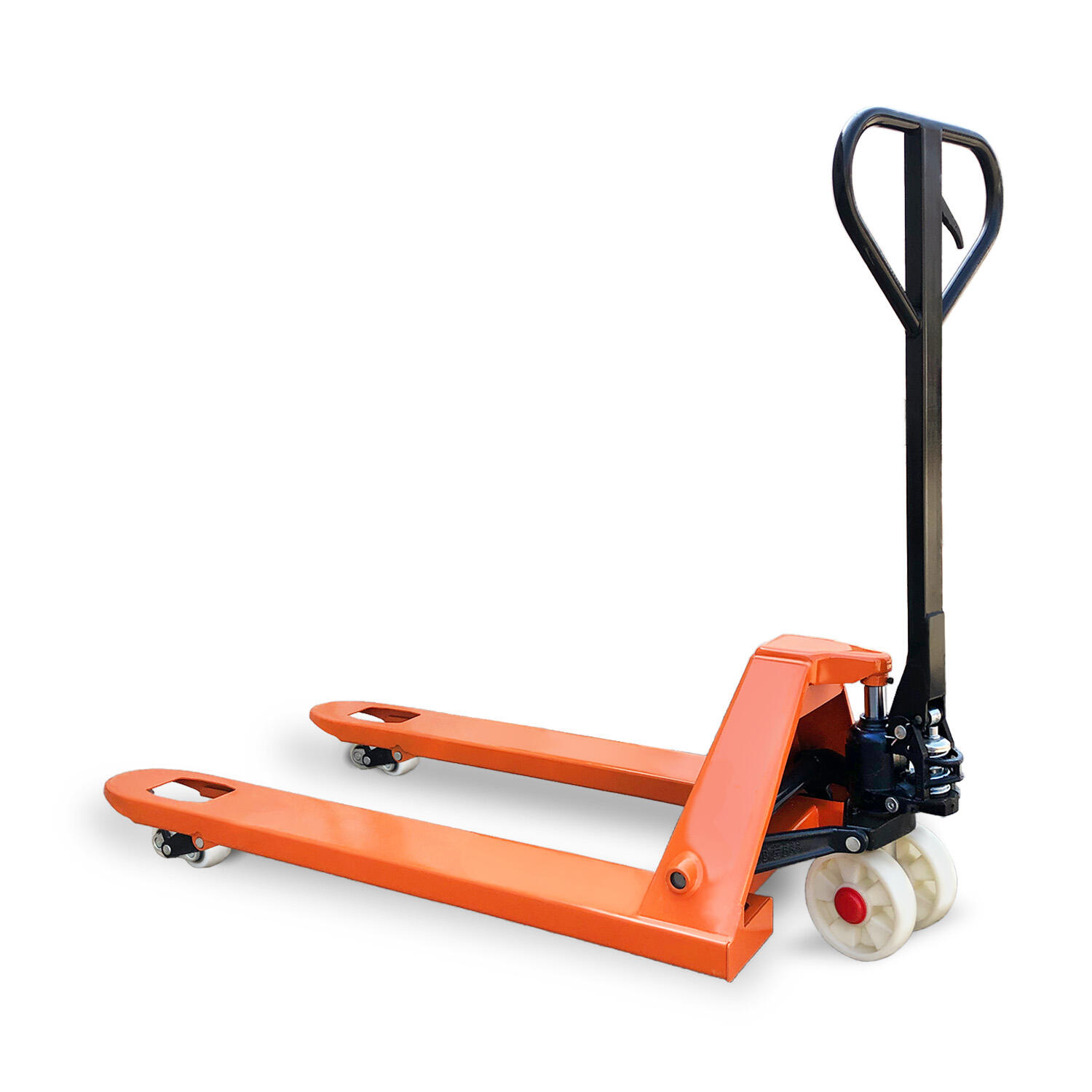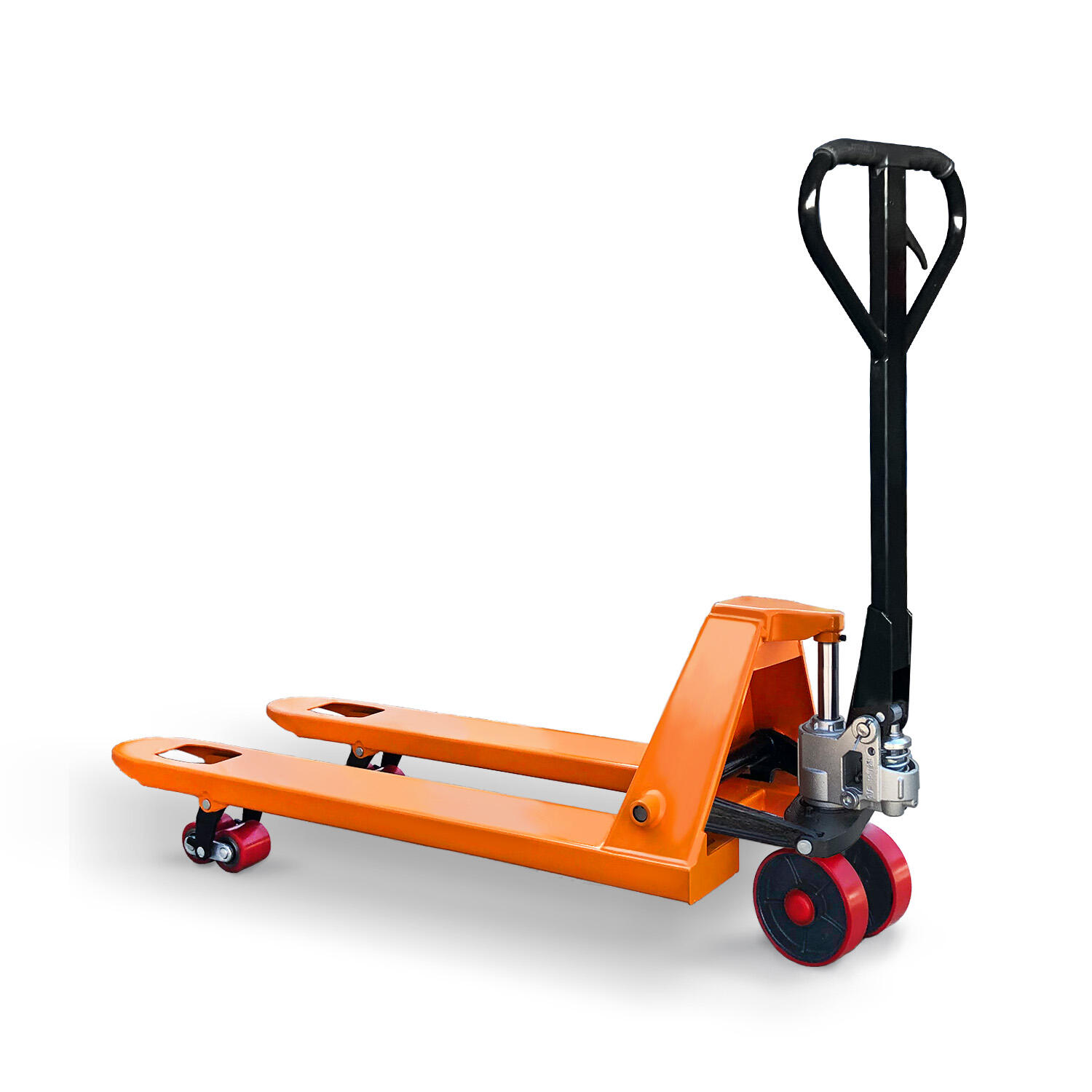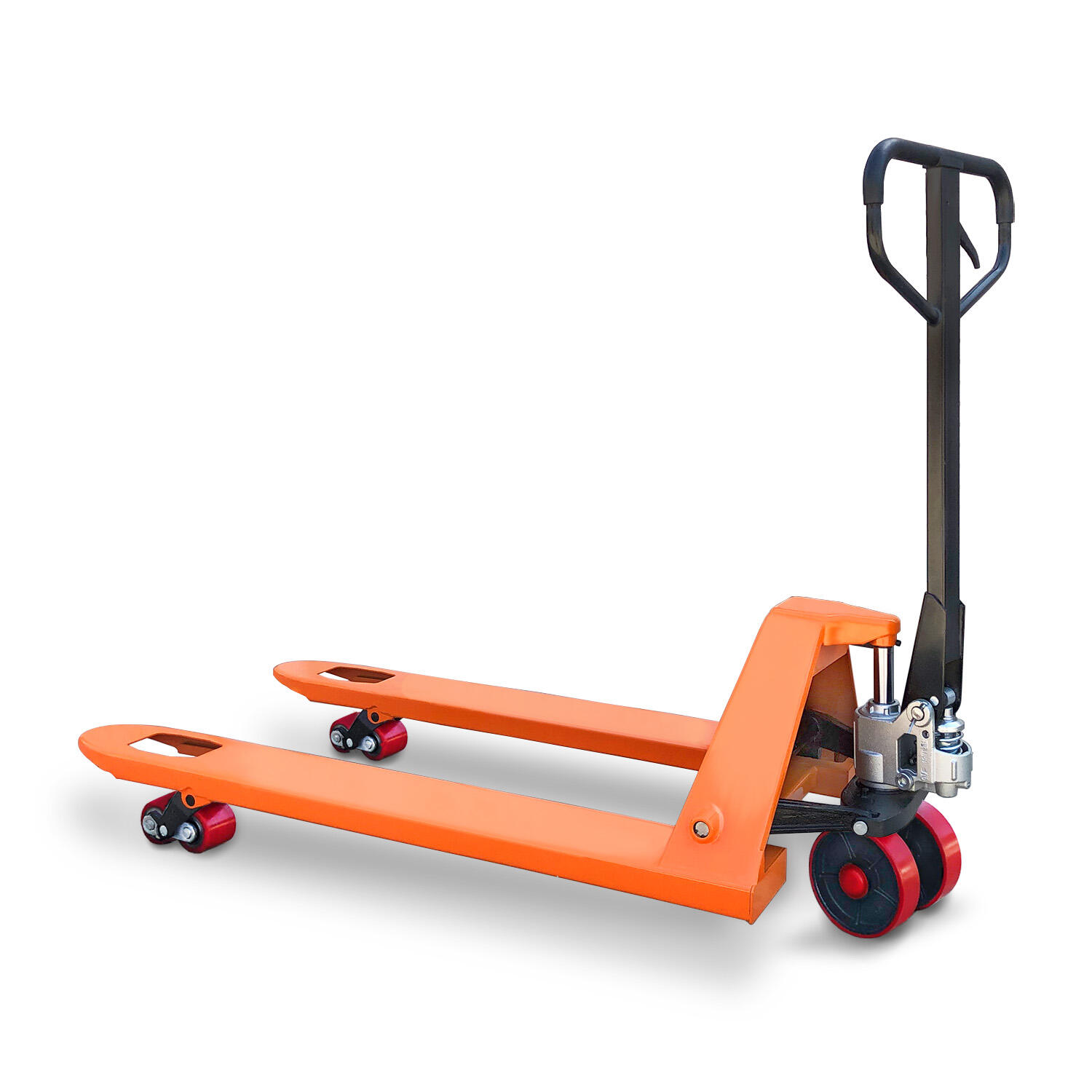A manual hand pallet is a versatile and essential tool in material handling, designed to simplify the lifting and moving of palletized goods through manual operation. It is widely used in various industries such as warehouses, retail stores, manufacturing facilities, and logistics centers, where efficient transportation of heavy items is a daily requirement. This equipment is favored for its simplicity, durability, and cost-effectiveness, making it accessible to businesses of all sizes, from small startups to large corporations. The core structure of a manual hand pallet consists of a robust steel frame that provides the necessary strength to support heavy loads, typically ranging from 1,000 kg to 2,500 kg. The frame is designed to withstand the rigors of daily use, including frequent lifting, pushing, and maneuvering over different surfaces. The forks, which are integral to the manual hand pallet, are made from high-grade steel, ensuring they can slide smoothly under pallets and remain sturdy even when carrying heavy weights. The forks are usually spaced to fit standard pallet sizes, but some models offer adjustable fork widths to accommodate various pallet dimensions, enhancing their versatility. One of the key features of a manual hand pallet is its hydraulic lifting mechanism, operated by a hand pump. By pumping the handle, the hydraulic system activates, raising the forks to the desired height—typically a few centimeters off the ground, enough to clear the floor for easy movement. This manual operation eliminates the need for external power sources, making the manual hand pallet usable in areas without electricity, such as outdoor loading docks or remote construction sites. The hydraulic system is designed to be reliable, with sealed components to prevent leaks and ensure smooth lifting and lowering of loads. Maneuverability is another standout aspect of a manual hand pallet. It is equipped with four wheels: two swivel casters at the front for easy turning and two fixed wheels at the rear for stability. These wheels are made from durable materials like polyurethane or rubber, allowing the manual hand pallet to glide smoothly over concrete, asphalt, and even slightly uneven surfaces. The swivel front wheels enable operators to navigate tight spaces, narrow aisles, and around obstacles with precision, making it suitable for use in crowded warehouses or small storage areas. Ergonomics plays a crucial role in the design of a manual hand pallet. The handle is strategically positioned to provide a comfortable grip, reducing strain on the operator’s hands, wrists, and back during extended use. Many models feature a rubberized or contoured handle that enhances control and minimizes fatigue, even when moving heavy loads for long periods. The pumping action required to lift the load is designed to be efficient, requiring minimal effort to achieve maximum lifting power, which further contributes to operator comfort and productivity. Safety is a top priority in the design of a manual hand pallet. It is equipped with a lowering valve that allows for controlled descent of the load, preventing sudden drops that could damage goods or cause injury. Some models also include a parking brake that can be engaged to secure the pallet in place when loading or unloading, preventing accidental movement. Additionally, the sturdy construction and wide base of the manual hand pallet provide stability, reducing the risk of tipping even when carrying uneven loads. Maintenance of a manual hand pallet is straightforward, ensuring long-term reliability and performance. Regular tasks include checking the hydraulic fluid levels, inspecting the hydraulic hoses and seals for leaks, and lubricating moving parts such as wheel bearings and pivot points. Cleaning the frame and forks to remove dirt, debris, and moisture helps prevent rust and corrosion, preserving the integrity of the steel components. Unlike powered equipment, there are no complex electrical systems or motors to maintain, reducing the need for specialized tools or professional servicing and minimizing downtime. The applications of a manual hand pallet are diverse. In warehouses, it is used to move pallets between storage racks, loading docks, and sorting areas. In retail settings, it assists in restocking shelves from storage rooms, reducing the time and effort required by staff. In manufacturing plants, it transports raw materials to production lines and finished products to storage areas. Its compact size and ease of use also make it ideal for small businesses with limited space, as it can be stored easily when not in use. Cost-effectiveness is a significant advantage of a manual hand pallet. Compared to electric or powered alternatives, it has a lower initial purchase price and lower operating costs, as it does not require fuel, electricity, or batteries. This makes it an attractive option for businesses looking to minimize expenses while still maintaining efficient material handling operations. Its durability and low maintenance requirements further contribute to its cost-effectiveness, providing long-term value with minimal ongoing investment. In summary, a manual hand pallet is a practical, reliable, and efficient tool that plays a vital role in material handling across various industries. Its robust construction, hydraulic lifting mechanism, ergonomic design, and easy maintenance make it an indispensable asset for businesses seeking to improve productivity, reduce workplace injuries, and optimize operational efficiency. Whether used in a large warehouse or a small retail store, a manual hand pallet delivers consistent performance, making it a cornerstone of effective material handling.


